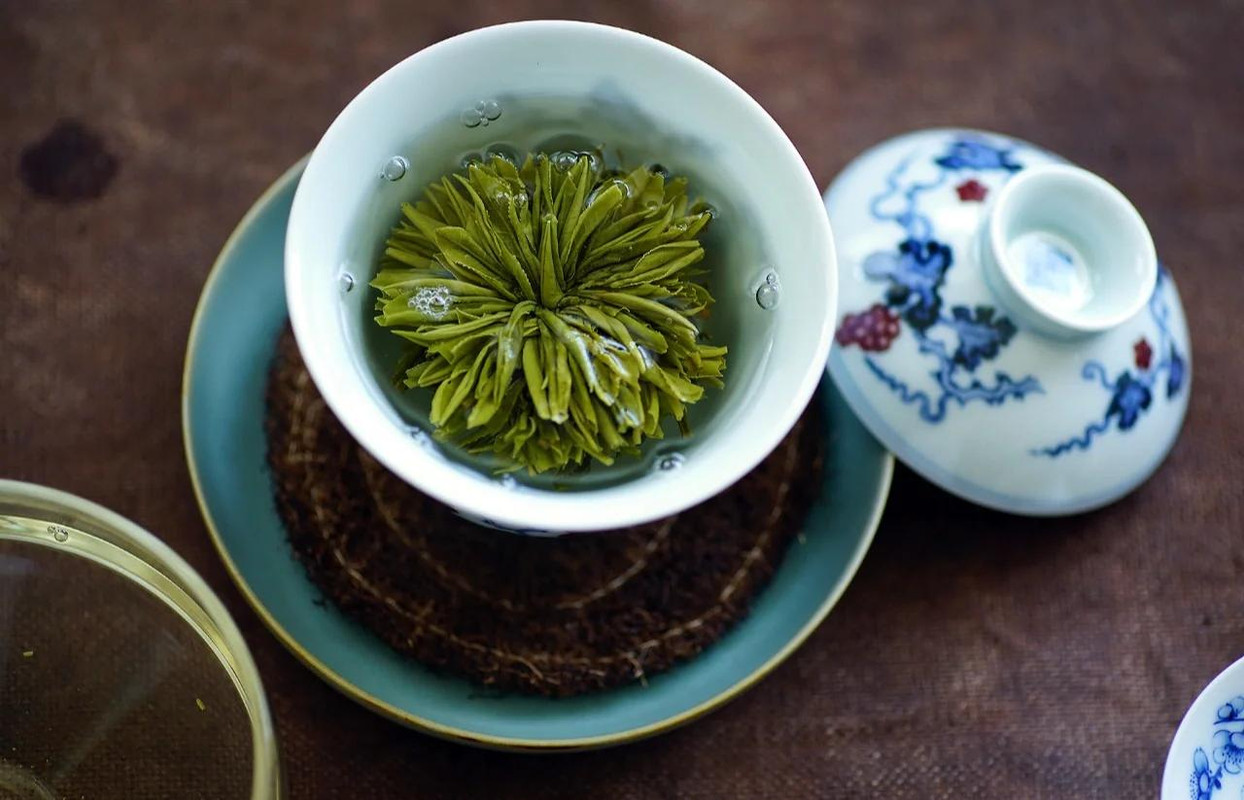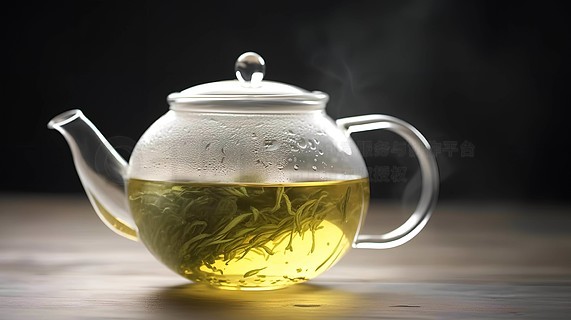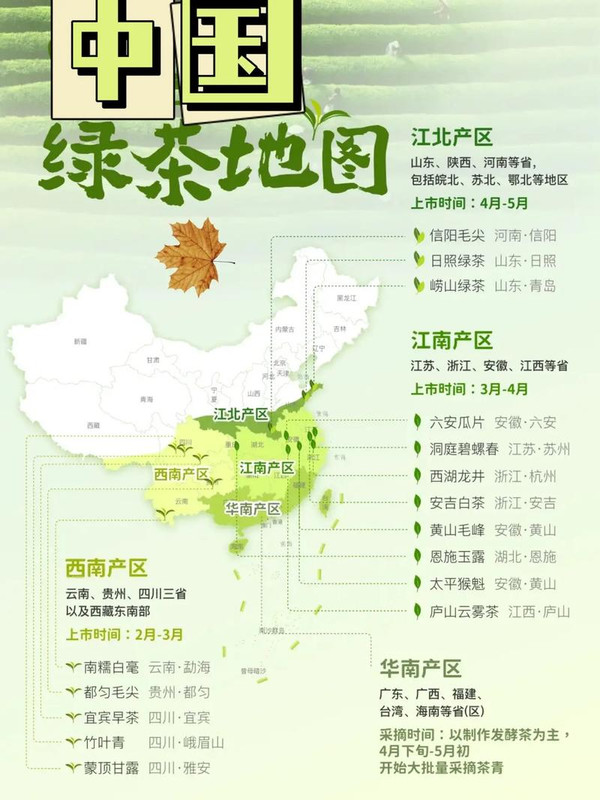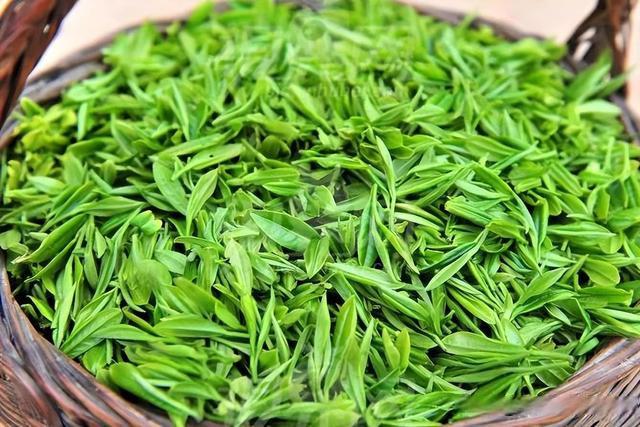Hailing from the mist-clad slopes of Anhui Province’s Shexian County, 绿牡丹 (Lümu Dan), or “Green Peony,” has captivated tea connoisseurs for decades with its striking resemblance to a blooming peony and its delicate orchid-like fragrance. This innovative handcrafted green tea, created in the 1980s by blending ancient techniques with modern aesthetics, embodies the artistry of Chinese tea craftsmanship.

Origins & Cultural Tapestry
Lümu Dan’s story begins in 1986, when tea masters in Shexian—inspired by the region’s historic “flower-scented teas”—experimented with shaping fresh leaves into peony-like blooms. The result was a tea so visually arresting and aromatic that it quickly gained national acclaim, earning a gold medal at China’s 1991 Tea Expo. Today, it symbolizes the revival of Anhui’s tea culture, blending tradition with contemporary creativity.
Terroir: Where Mist Nurtures Flavor
The tea grows in a microclimate shaped by Shexian’s 400-meter elevation, where:
- Climate: Annual rainfall exceeds 1,600mm, with fog enveloping the slopes 200 days a year. Spring temperatures hover between 12–18°C, ideal for slow bud development.
- Soil: Reddish-brown loam enriched by decaying granite, imbuing the tea with a mineral undertone.
- Cultivars: The local “Huangshan Dabaicha” variety, prized for its thick, downy buds, forms the tea’s backbone.
Craftsmanship: From Leaf to Floral Art
Plucked from mid-March to early April, only the youngest bud and one adjacent leaf are harvested. The six-step production includes:
- Withering (摊青): Leaves are spread on bamboo trays for 4–6 hours to reduce moisture.
- Pan-Frying (杀青): Leaves are tossed in iron woks at 130–140°C to halt oxidation, preserving their emerald freshness.
- Shaping (做形): Artisans use tweezers to bundle 5–7 leaves into a peony-like bloom, secured with a golden thread.
- Baking (烘干): A two-stage drying process—first at 110°C to fix shape, then at 60°C to enhance fragrance—yields a moisture content below 5%.
Aesthetic & Sensory Journey
- Dry Leaf: Tightly curled jade-green blooms, resembling miniature peonies, with silver trichomes.
- Infusion: Brewed at 85°C, the liquor transforms into a golden jade, with blooms unfurling like blossoming flowers.
- Aroma: Dominant notes of fresh orchids and chestnut, with a lingering sweetness.
- Mouthfeel: Medium-bodied with a brisk astringency that mellows into a honeyed aftertaste, leaving a refreshing coolness in the throat.
Grading & Value
Lümu Dan is classified into three grades:
- Special Grade (特级): Uniform blooms, dense silver down, priced at ¥1,200–¥2,000/500g.
- Grades 1–2: Include slightly larger blooms, with prices ranging from ¥600–¥1,000/500g.
Spring harvests command premiums, while autumn batches offer budget-friendly options.
Brewing Rituals
To honor its complexity:
- Teaware: Use glass or white porcelain to admire the “peony bloom.”
- Ratio: 1 bloom to 150ml water (1:50 ratio).
- Infusions:
- First steep: 1 minute (awakens the bloom).
- Subsequent steeps: Add 30 seconds per infusion (up to 5 times).
Authenticity & Health
Counterfeits often lack the tea’s signature “peony” shape and orchid aroma. Genuine Lümu Dan:
- Visual Check: Blooms should be uniformly green with silver tips.
- Cold Brew Test: Steep 1 bloom in 50ml cold water; authentic leaves sink gradually, releasing a sweet aroma.
Beyond its cultural cachet, the tea offers:
- Antioxidant Power: Rich in EGCG, it combats free radicals linked to aging and cancer.
- Metabolic Boost: Caffeine and L-theanine synergize to enhance focus without jitters.
- Digestive Aid: Traditionally used to alleviate bloating after heavy meals.
Legacy & Modernity
Lümu Dan’s creation in the 1980s merged ancient wisdom with modern aesthetics. Today, artisans experiment with floral infusions—jasmine or osmanthus—while preserving the classic “peony” aesthetic. As a UNESCO-recognized cultural heritage product, it remains a bridge between China’s past and its dynamic tea scene.
From imperial courts to contemporary teacups, 绿牡丹 endures as a testament to Anhui’s terroir—a living poem written in jade and fire.



